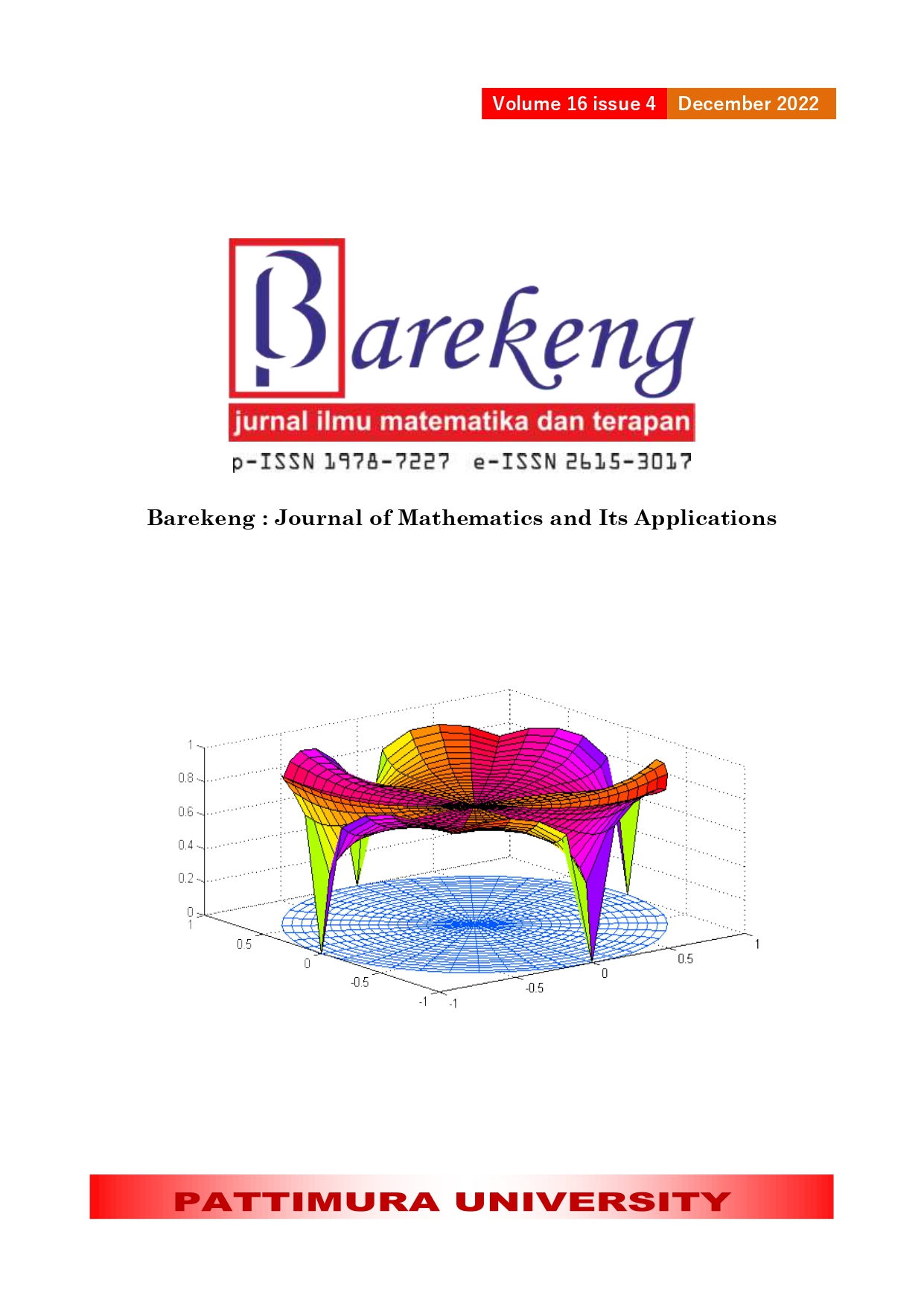MULTILEVEL REGRESSION WITH MAXIMUM LIKELIHOOD AND RESTRICTED MAXIMUM LIKELIHOOD METHOD IN ANALYZING INDONESIAN READING LITERACY SCORES
Abstract
The multilevel regression model is a development of the linear regression model that can be used to analyze data that has a hierarchical structure. The problem with this data structure is that individuals in the same group tend to have the same characteristics, so the observations at lower levels are not independent. Education research often produces a hierarchical structure, one of which is PISA data, where students as level-1 nested within schools as level-2. In the PISA 2018 survey, reading literacy is the main focus. The data are sourced from the Organisation for Economic Co-operation and Development (OECD). The survey results show that the reading literacy scores of Indonesian students have decreased, thus placing Indonesia at 74th out of 79 countries. However, it is still very rare to research the reading literacy of Indonesian students' using a multilevel regression model. This study aims to apply a multilevel regression model to determine the factors influencing Indonesian reading literacy scores in PISA 2018 survey data. The results of this study indicate that the factors that influence response variable are gender, grade level, mother's education, facilities at home, age at school entry, student discipline behavior at school, and failing grade, while at the school level are the type of school and school location. The magnitude variance of student reading literacy scores can be explained by the explanatory variables the student level is 11,42% and the school level is 60,66%, while the rest is explained by another factor outside the study.
Downloads
References
H. Goldstein, Multilevel Statistical Models, 2nd ed. Halsted, New York: Halsted Press, 1995.
J. J. Hox dan L. Wijngaards-de Meij, “The multilevel regression model,” in H. Best & C. Wolf (eds), The SAGE handbook of regression analysis and causal inference., Thousand Oaks, CA: Sage, 2014.
J. J. Hox, M. Moerbeek, dan R. V. Schoot, Multilevel Analysis: Techniques and Applications, Third Edition (Quantitative Methodology Series). New York: Routledge, 2018.
T. A. B. Snijders dan R. J. Bosker, Multilevel Analysis: An Introduction to Basic and Advanced Multilevel Modeling, 2nd ed. London etc.: Sage Publishers, 2012.
B. Tantular, “Pendekatan Model Multilevel untuk Data Repeated Measures,” in Kontribusi Pendidikan Matematika dan Matematika dalam Membangun Karakter Guru dan Siswa, 2012, hal. 1–10.
Danardono, Analisis Data Longitudinal. Yogyakarta: UGM press, 2018.
E. Park, “The comparison between repeated measures ANOVA and multilevel modeling to investigate the effectiveness of language instruction,” Adv. Soc. Sci. Res. J., vol. 7, no. 6, hal. 426–437, 2020, doi: 10.14738/assrj.76.8438.
A. Ubaidillah, A. Kurnia, dan K. Sadik, “Generalized Multilevel Linear Model dengan Pendekatan Bayesian untuk Pemodelan Data Pengeluaran Perkapita Rumah Tangga,” J. Apl. Stat. Komputasi Stat., vol. 9, no. 1, hal. 19–30, 2017, doi: https://doi.org/10.34123/jurnalasks.v9i1.91.
OECD, “Sampling in PISA,” Prague, Czech Republic, 2016.
OECD, “PISA 2018 Assessment and Analytical Framework,” Paris: OECD Publishing, 2019.
OECD, PISA 2018 Results. New York: Columbia University, 2019.
R. Pakpahan, “Faktor-Faktor Yang Memengaruhi Capaian Literasi Matematika Siswa Indonesia dalam PISA 2012,” J. Pendidik. Dan Kebud., vol. 1, no. 3, hal. 331–348, 2017, doi: https://doi.org/10.24832/jpnk.v1i3.496.
V. M. Santi, K. A. Notodiputro, dan B. Sartono, “A Study of Several Variable Selection Methods in Modelling the Mathematics Scores of Indonesian Students in Programme for International Student Assessment (PISA) based on Convex Penalized Likelihood,” J. Physic AASEC, 2019.
V. M. Santi, K. A. Notodiputro, dan B. Sartono, “Generalized Linear Mixed Models by penalized Lasso in modelling the scores of Indonesian students,” J. Phys. Conf. Ser., 2021, doi: 10.1088/1742-6596/1869/1/012140.
V. M. Santi, K. A. Notodiputro, dan B. Sartono, “Restricted Maximum Likelihood Estimation for Multivariate Linear Mixed Model in Analyzing,” BAREKENG J. Ilmu Mat. dan Terap., vol. 16, no. 2, hal. 607–614, 2022, doi: 10.30598/barekengvol16iss2pp607-614.
L. V. Hedges dan E. C. Hedberg, “Intraclass Correlations and Covariate Outcome Correlations for Planning Two- and Three-Level Cluster-Randomized Experiments in Education,” J. Index. Metrics, vol. 37, no. 6, hal. 445–489, 2014, doi: 10.1177/0193841X14529126.
M. Kramer, “R2 Statistics for Mixed Models,” in Conference on Applied Statistics in Agriculture, 2015, no. February, doi: 10.4148/2475-7772.1142.
Copyright (c) 2022 Vera Maya Santi, Rifa Kamilia, Faroh Ladayya

This work is licensed under a Creative Commons Attribution-ShareAlike 4.0 International License.
Authors who publish with this Journal agree to the following terms:
- Author retain copyright and grant the journal right of first publication with the work simultaneously licensed under a creative commons attribution license that allow others to share the work within an acknowledgement of the work’s authorship and initial publication of this journal.
- Authors are able to enter into separate, additional contractual arrangement for the non-exclusive distribution of the journal’s published version of the work (e.g. acknowledgement of its initial publication in this journal).
- Authors are permitted and encouraged to post their work online (e.g. in institutional repositories or on their websites) prior to and during the submission process, as it can lead to productive exchanges, as well as earlier and greater citation of published works.






1.gif)



